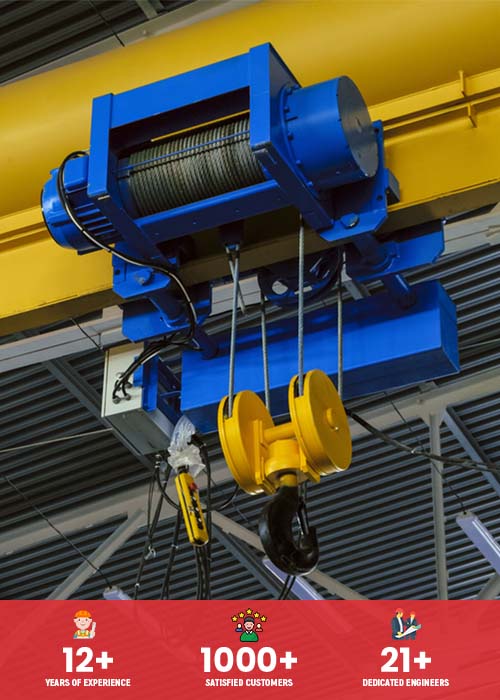Tips to Prevent Load Swing in EOT Cranes
Cranes are a necessary component of many industrial processes but improper use of overhead cranes can be extremely dangerous. Swinging is a prevalent issue with overhead cranes, as the crane sways back and forth as a result of the cargo being hoisted moving horizontally. In order to keep you and your employees safe when operating overhead cranes, this article provides pointers suggested by every EOT crane manufacturer in Gujarat on how to prevent them from swinging thus preventing accidents at the workplace.
Tips And Tricks For Preventing Overhead Crane Swinging
- Appropriate Load Distribution
Appropriate load balancing is one way to stop overhead cranes from swinging. Making sure the weight is spread uniformly over the crane’s hoist ropes is crucial while lifting a load. Due to the weight shifting from side to side, an uneven load could lead the crane to swing. Finding the load’s center of gravity and positioning it appropriately are crucial to avoiding this. Either mathematical calculations or instruments like load cells can be used for this.
- Monitoring of Wind Speed
One of the main reasons why cranes swing is wind speed. Thus, before starting any lift operation, it is essential to keep an eye on the wind speed for EOT crane load swing prevention. The crane operator should halt operations till the winds have subsided if the wind speed exceeds the advised threshold.
- Proper training of overhead crane operators
To operate a crane safely and efficiently, operators need to receive the necessary training. This includes being aware of weight limitations, using the right rigging methods, and avoiding swinging. Additionally, operators should receive training on how to recognize possible risks and react in an emergency. Accidents brought on by crane swinging can be considerably decreased with the right training.
- Frequent Inspection and Maintenance
To make sure overhead cranes are in good operating order, they should undergo routine inspections. This involves inspecting the brakes and other safety measures, looking for rusting or cracks in the crane’s frame, and examining the hoist ropes for wear or damage. Crane swaying is frequently caused by equipment failure, which can be avoided with routine maintenance and if you are thinking, how to stop crane swaying, this might be one of the answers.
- Employ Anti-Sway Equipment
A safety feature called a crane anti-rocking system keeps cranes from swaying or rocking too much while in use. In order to maintain the crane’s stability and safety, this system uses sensors to identify any deviations of the crane and then automatically adjusts the crane’s motions to counteract them.
These gadgets may be electronic or mechanical. Inverted figure-of-eight wire rope anti-sway systems and electrical anti-sway systems are frequently utilized. By lowering sway by over 90%, increasing productivity by over 30%, and enabling precise positioning in less time, the electrical anti-sway system can lower operator work intensity while enhancing safety and prolonging crane life.
Why should you choose Krishna crane engineers?
Krishna Crane Engineers is dedicated to exceeding client expectations by offering creative, dependable, and secure hoisting solutions. In order to ensure that our clients’ facilities run effectively and productively, we use our knowledge and experience to provide top-notch goods and services. Thanks to the tremendous assistance of our team of highly skilled specialists that specialize in crane and hoist manufacturing, we are among the top producers of crane and hoist equipment.
Krishna Crane Engineers occupy a significant position in the market because we can effectively satisfy the unique needs of a variety of industries, including manufacturing, ports, shipping yards, construction firms, transportation and logistics firms, and other industries that require material handling and goods lifting cranes.



